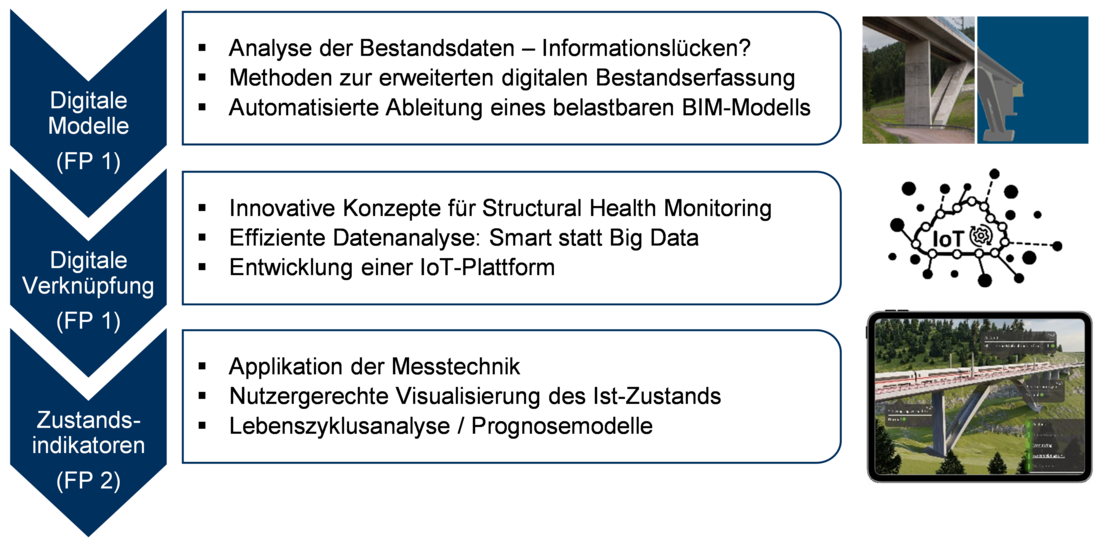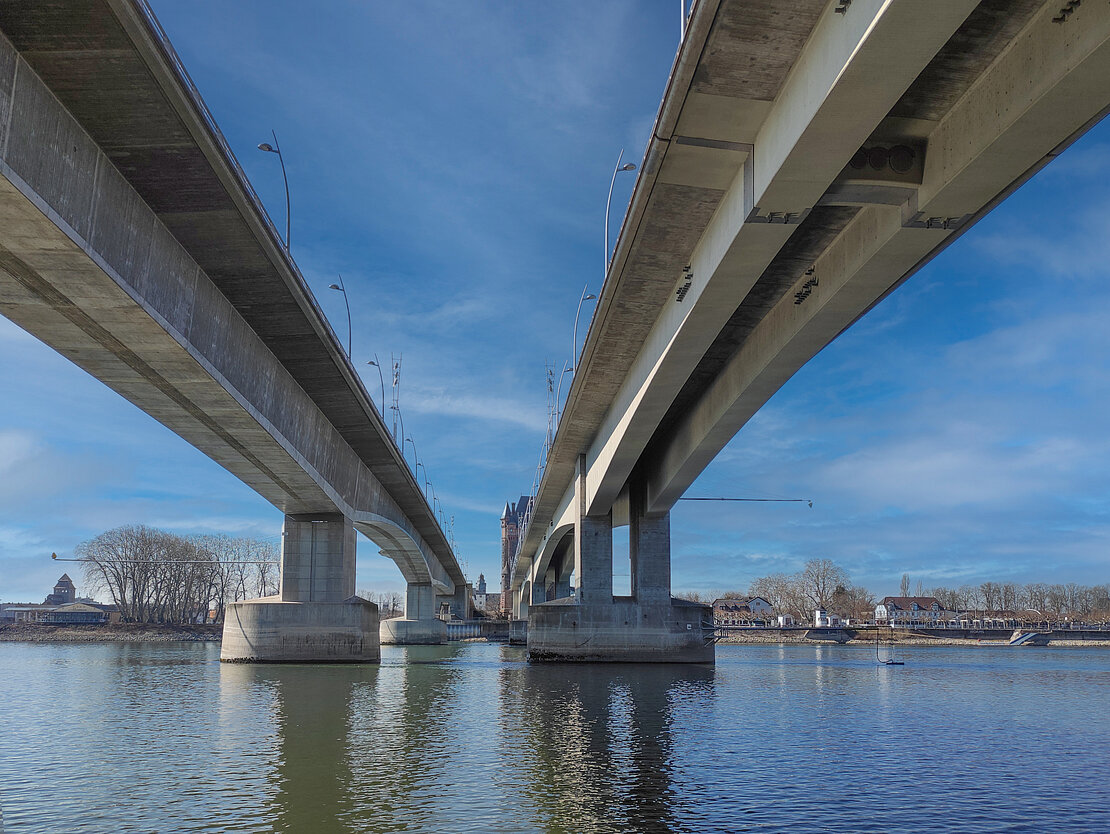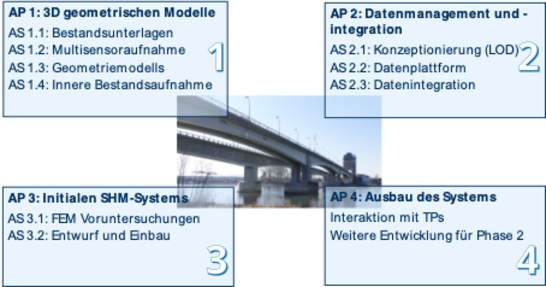Hundred plus - extending the service life of complex building constructions using intelligent digitization
The program and accompanying research
The condition of a structure is characterized by increasingly rapid degradation as it ages. To prolong the usability of complex structures, significantly more information is required at a much earlier stage than is common today. In order to drastically reduce this deficit and move towards predictive maintenance, fundamental research is needed on the methods of collecting, linking and evaluating all data on geometry, material, stress and aging. Digitization, in particular the concept of the digital twin, is taking on a completely new significance in this context. It enables the combination and real-time evaluation of all data required for operation and maintenance. However, the construction industry is faced with special challenges in terms of content and methodology: Buildings, especially those in the transport infrastructure, are always unique. They are characterized by enormous dimensions and have a considerably longer service life than other technical facilities. Their rate of change due to deterioration is very low and thus hardly measurable. The SPP "100+" addresses these challenges in three interdisciplinary research areas: Digital Models, Digital Linkage, Condition Indicators.
The area "Digital Models" develops methods to generate georeferenced, object-oriented 3D models from heterogeneous as-built data of engineering structures, supported by digital construction recording methods, in a largely automated way, which contain semantic information in addition to the geometry.
The area of "digital linkage" is how the time-variant condition information of the real object can be processed in real time and linked to the digital twin.
In order to automatically convert huge amounts of data into condition information that can be quickly and largely intuitively grasped by humans, the "Condition Indicators" area is developing methods for their automated derivation from continuous measurement data and from data from classic maintenance and inspection.
The developed methods for model generation, digital linking and derivation of condition indicators are to be tested and validated on a demonstrator structure (The Nibelungen Bridge Worms, see Figure 1).
In order to prepare the validation object and to obtain sufficient data, four work packages are planned (see Figure 2).
Contact
Publications
Peer-Reviewed Journal Paper
Bartels, J.; Xu, R.; Kang, C.; Herrmann, R.; Marx, S.: Experimental Investigation on the Transfer Behaviour and Environmental Influences of Low-Noise Integrated Electronic Piezoelectric Acceleration Sensors. Metrology (2024), 4, 46–65.
Kang, C.; Voigt, C.; Eisermann, C.; Kerkeni, N.; Hegger, J.; Hermann, W.; Jackmuth, A.; Marzahn, G.; Marx, S.: Die Nibelungenbrücke als Pilotprojekt der digital unterstützten Bauwerkserhaltung. Bautechnik (2024) 101, 2, p. 76-86, 11 p. DOI: 10.1002/bate.202300089
Kang, C.*; Eisermann, C.; Ramasetti, E. K.; Degener, S.; Marzahn, G.; Herrmann, R.: Collaborative Structural Health Monitoring of the 70-year-old Nibelungen Bridge: a key part of its intelligent digital maintenance strategy. Structural Health Monitoring, 2024 (under review)
Conferences
Kang, C.; Wedel, F.; Walker, M.; Marx, S: Advancements in Digital Twin Development for Bridges in Germany, fib-symposium 2024 ReConStruct, 11-13 November 2024, Christchurch, New Zealand, S 10. (accepted)
Kang, C.; Walker, M.; Marx, S.: Advances of Digital Twins in Bridge Structures Maintenance. SMAR 2024 – 7th International Conference on Smart Monitoring, Assessment and Rehabilitation of Civil Structures, 4-6. September 2024, Salerno, Italy, S 8.
Kang, C.; Bartels, J.; Voigt, C.; Marx, S.: Extending Structure Life via Intelligent Digitization: The Nibelungen Bridge as a Pilot Project. EWSHM 2024: 11th European Workshop on Structural Health Monitoring, 10 June 2024 in Potsdam, Germany, 10 S.
Aqlan, S.; Hamdam, A.; Marx, S.;Kang, C.: Ontology-Driven Database for Integrating Bridge Data from Multiple Open Sources, 2025 European Conference on Computing in Construction, Porto, 2025 (ACCEPTED)







